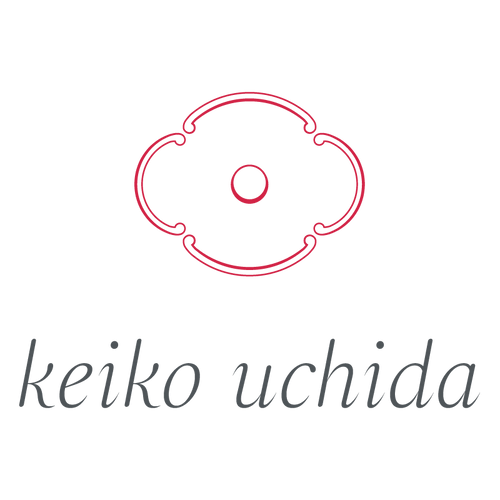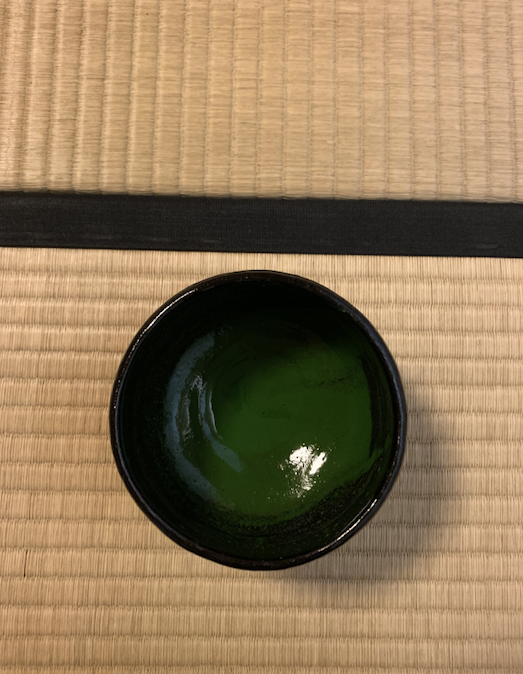When I started to properly practice the Japanese Tea Ceremony over 25 years ago, I wanted to own a chawan and bought a lovely one from the Hagi region. I brought it back from Japan around 5 or 6 years ago but dropped my bag twice at Heathrow Airport damaging it. I’ve kept the chawan of course, but I can’t open the box anymore as it’s too sad to see the broken bowl. I thought I try and mend it using kintsugi, but this chawan is too nice to practice on. One day I will take it to a specialist in Japan. My tea ceremony teacher has always told me that we should use our good chawan for both ourselves and our guests. If you put it on display in a glass case where no one can use it, the chawan wouldn’t be happy. However, by using it we have to accept that it might get damaged. We have to know that anything with a shape might someday break.
In the tea ceremony we say ‘Ichi Raku, Ni Hagi, San Karatsu’. It means that a lover of the tea ceremony’ first desire is to own a Raku chawan, their second desire to own a Hagi chawan, and their third to own a Karatsu chawan. I don’t own any Raku yet but am keen to add nice Raku and Karatsu bowls to my collection!
Raku tea bowls have a long history. Raku Chojiro was the great tea master Sen no Rikyu’s favourite potter in the 16th Century. His father had been invited from China to Japan. Together Chojiro and Rikyu created a unique aesthetic, completely black, minimalistic Raku chawan in Kyoto. They were made using just the hand of the potter and a spatula, not using a wheel, and fired at a lower temperature than normal. The Raku family has continued making their chawan in this way for 16 generations and is now run by Raku Kichizaemon, the 16thhead of the kiln. You can visit the Raku Museum in Kyoto to see some of their work. Chawan made by the Raku family are considered proper Raku, although chawan made using the same techniques are also called Raku. Red and black Raku ware is the most famous, although I’d like to own a piece of pure black Raku one day.
Hagi is a town in Yamaguchi prefecture, much farther west then Kyoto. The Hagi style of pottery uses soft clay and low temperatures to create chawan in soft, light colours, and originated in the 17th century. Originally, some master potters came to Hagi from Korea. Hagi chawan are soft and delicate and have many cracks. Many tea ceremony lovers, myself included, adore Hagi as the matcha powder fills these cracks, and the colour of the chawan darkens over time. If we were to keep Hagi chawan in a glass case, we couldn’t see the colour change, so we have to use our Hagi chawan, even if there is a risk of damaging it.
Karatsu is in Saga prefecture on the island of Kyushu, in southern Japan. Their pottery style is heavily influenced by China and Korea, as they are so close. Karatsu is not far from Imari either. It is interesting that Imari is so much more famous than Karatsu in Europe. Karatsu produces a lot of table ware, as well as proper chawan suitable for the tea ceremony. The Japanese Ryokan (traditional hotel) Yoyokaku use table ware by the well-known Karatsu potter Takashi Nakazato. The hotel also has a gallery of Nakazato’s work. It would be a great place to visit and use well-made and beautiful Karatsu!
Everyone has different hands and will find different chawan beautiful. I like feeling the warmth from my favourite chawan! One day I want to organise a trip to Japan and visit Yoyokaku Ryokan and the studios of some of my favourite potters.
It is wonderful to have a beautiful chawan to make the best matcha tea. However, I also love the idea of using your favourite cereal bowl, or French café au lait bowl, but still using a proper grade of matcha tea from our store! My advice is to use a larger cup than a standard size mug, as a chasen can’t be used properly in a mug. I know that some of you use electric chasen or milk frothers to mix matcha as you’re very busy, but a bamboo chasen is so much nicer in terms of taste! I also like the idea that we can take a break for a few minutes to make a jolly nice cup of matcha tea. We can have a moment of peace during this time. A good chasen can also be used for a long time, which is much better than buying a cheap one, or electric one more frequently.

